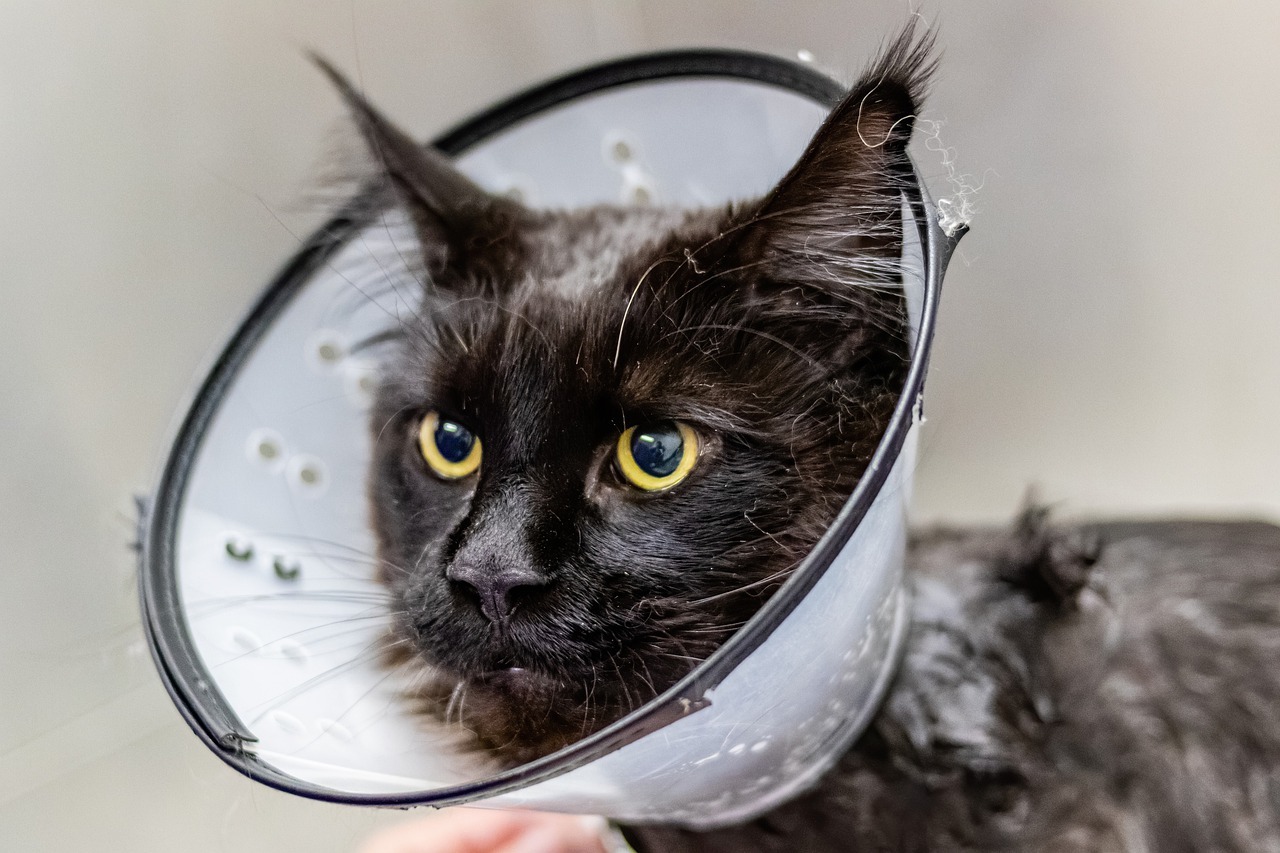Hot Spots on Cats

Hot spots, also known as acute moist dermatitis, are skin sores characterized by hair loss, redness, and purulent oozing. These sores are often considered to be self-inflicted. They form when cats excessively scratch, bite, or lick at certain parts of their skin causing the skin to become inflamed and open sores to develop. Continue reading to learn more about the causes, symptoms, and treatment of hot spots in cats.
Are you concerned about your pet?
Book a video consultation with an experienced veterinarian within minutes.
- Professional vet advice online
- Low-cost video vet consultations
- Open 24 hours a day, 365 days a year
Symptoms of Hot Spots in Cats
- Compulsive scratching, licking, biting, or grooming
- Formation of skin lesions
- Red and inflamed skin
- Lesions that ooze
- Lesions that are warm to the touch (hence the name)
- Crusty skin
- Hair loss at the affected area
- Matted hair at the affected area
- Pain at the affected area
What causes hot spots on cats?
Fleas are a common cause of hot spots in cats. Fleas can be extremely annoying and irritating, causing your cat to scratch or groom excessively. Fleas can also inject their saliva into your cat’s skin. This saliva contains a protein that can trigger an allergic reaction and significant itching.
Mites are another potential cause for your cat’s hot spot. Ear mites (Otodectes cynotis) and skin mites (Demodex gatoi, Notoedres cati) are severe irritants leading to scratching, biting, chewing, and ultimately hot spots.
Allergies predispose your cat to form hot spots. Allergies occur when your cat’s immune system perceives an otherwise harmless substance as a threat. The reaction can happen in response to food, pollens, molds, house dust, and more. Symptoms in cats include itchy skin, excessive grooming, itchy eyes, runny eyes, itchy ears, chewing, biting, and licking.

Other Skin Conditions to Look Out For
Skin or ear infections can be involved in the formation of hot spots.
- Yeast (Malassezia) is present in your cat’s ears, but an overgrowth of this yeast will lead to inflammation and itching.
- Ringworm (Microsporum canis) is often mistaken to be a parasite, but in fact, is a fungus that can grow on your cat’s skin. It can spread rapidly and make your cat extremely pruritic (itchy).
- Bacterial Infections (Staphylococcus bacterium) are often opportunistic. They grow on the skin surface and sometimes deep in the skin once the immune system is weakened or your cat breaks the skin surface from scratching.
Treatment and Prevention of Hot Spots
- Clip the hair. The hair and any matted fur around the affected area should be clipped or shaved. This is not something you should try at home. Not only are the lesions very painful to cats, requiring some form of sedation, but your cat’s skin is thin making it easy to accidentally lacerate.
- Clean the skin lesion. Clean the skin surface with mild antibacterial soap and rinse it thoroughly.
- Stop the itch. To stop the itch your vet will most likely give a cortisone injection. Cortisone injections are well tolerated by cats and can be used to rapidly help heal hot spots. Other options include topical ointments and sprays that contain cortisone.
- Treat the infection. Your vet will determine the best antibiotic for your cat. If your cat has a yeast or fungal infection, then oral medications, shampoos, and topicals may be needed.
- Relieve the pain. The application of a cold compress can provide relief from pain and itching. You can do this at home by placing a wet washcloth in the freezer and then placing it directly on the affected area.
- Use an E-collar. Your cat should wear an e-collar (cone) to prevent excessive scratching, licking, and biting.
- Brush your cat regularly. Brushing allows you to facilitate the distribution of sebum or natural oil around your cat’s coat. It also gives you a chance to look for parasites and remove dirt.
- Use flea prevention. A monthly flea prevention is highly recommended for all cats (yes, even the indoor cats) and many of the monthly preventatives will also prevent mites.
- Keep the bedding clean. Always clean and wash your cat’s bedding. This can help to prevent parasites like fleas and mites as well as help deter allergens like molds and house dust.

When to Contact a Vet
Remember hot spots can easily be treated and prevented once an underlying cause is identified. If you suspect your cat may have a hot spot, then schedule an appointment with one of our doctors here at FirstVet. We can help you determine what you may or may not be able to manage at home and when it’s necessary to head into your doctor’s office.
Read more:
Why does my cat have scabs all over his body?
Fur Mowing (Overgrooming) in Cats
Need to speak with a veterinarian regarding your cat’s hot spot or another condition?
Click here to schedule a video consult to speak to one of our vets. You can also download the FirstVet app from the Apple App Store and Google Play Stores.
More articles about Cat
Are you concerned about your pet?
Book a video consultation with an experienced veterinarian within minutes.